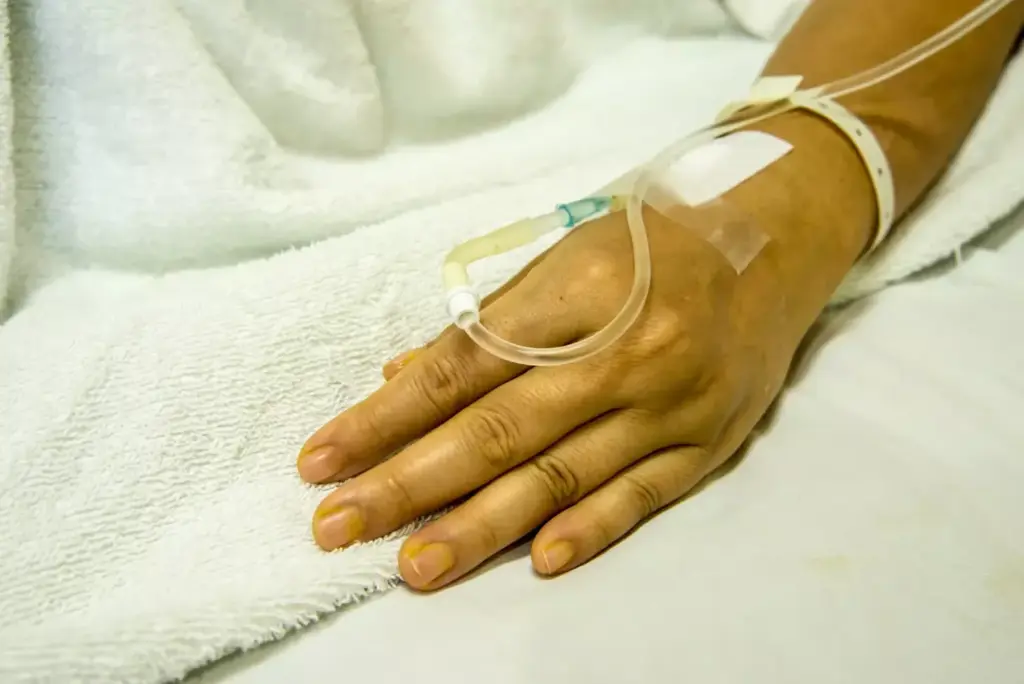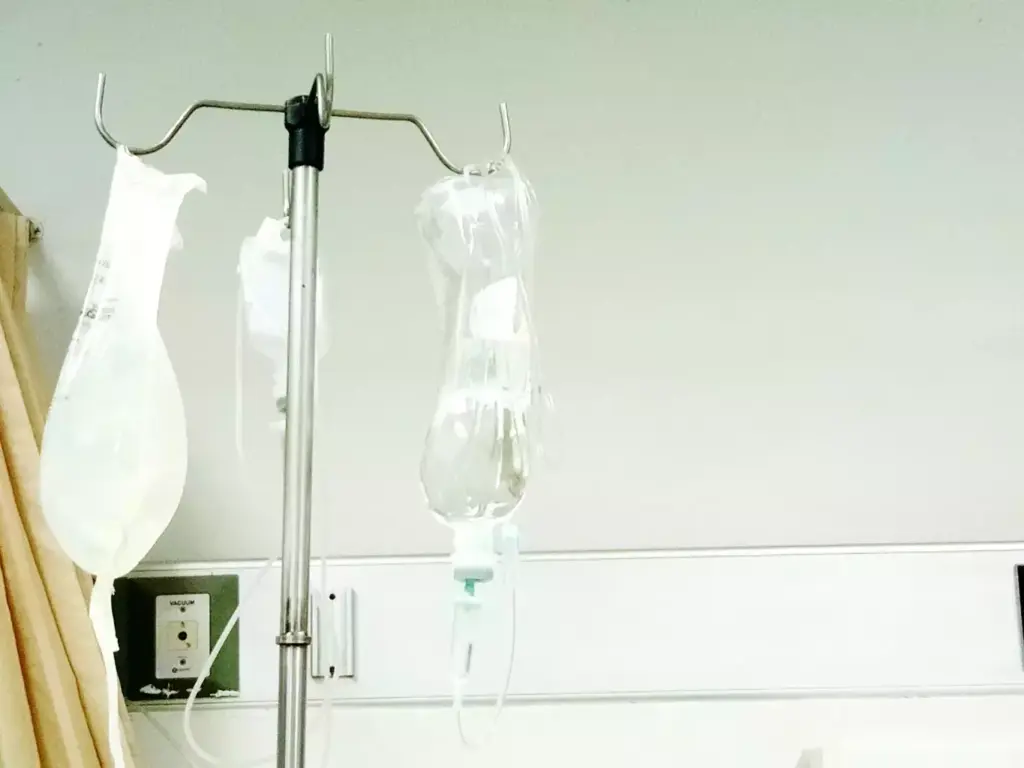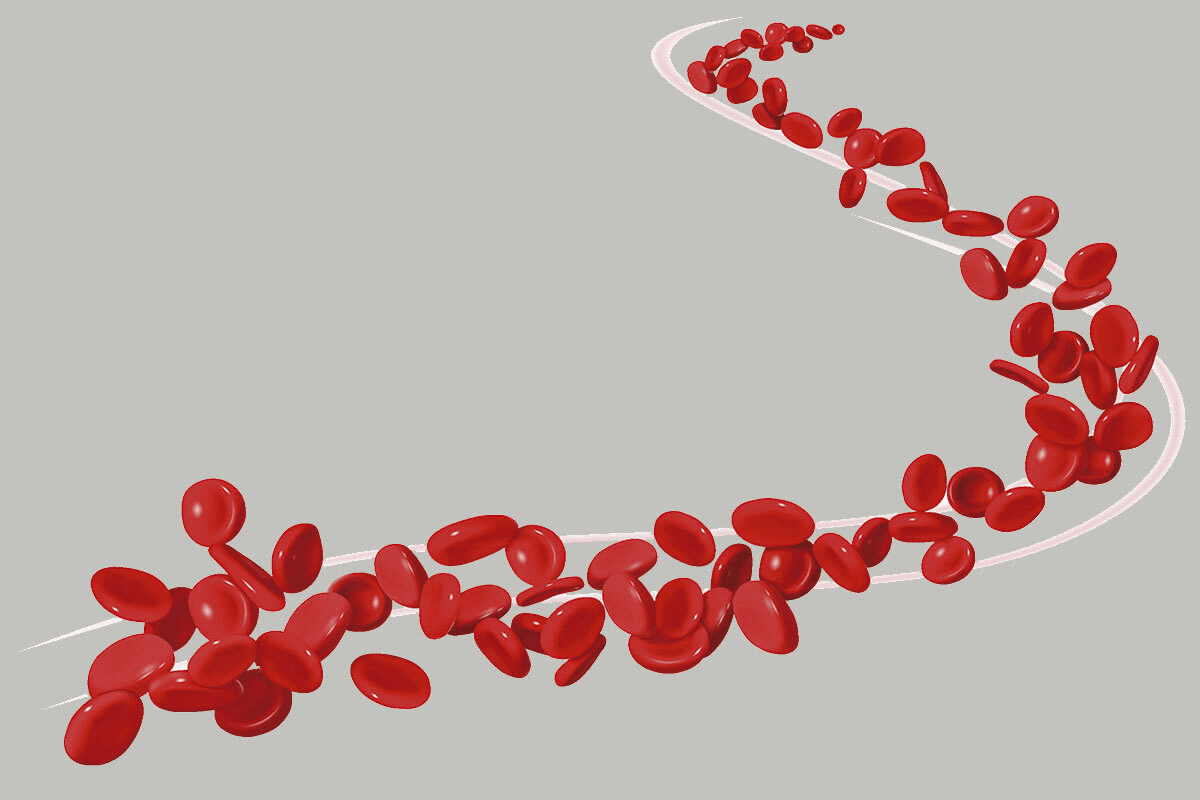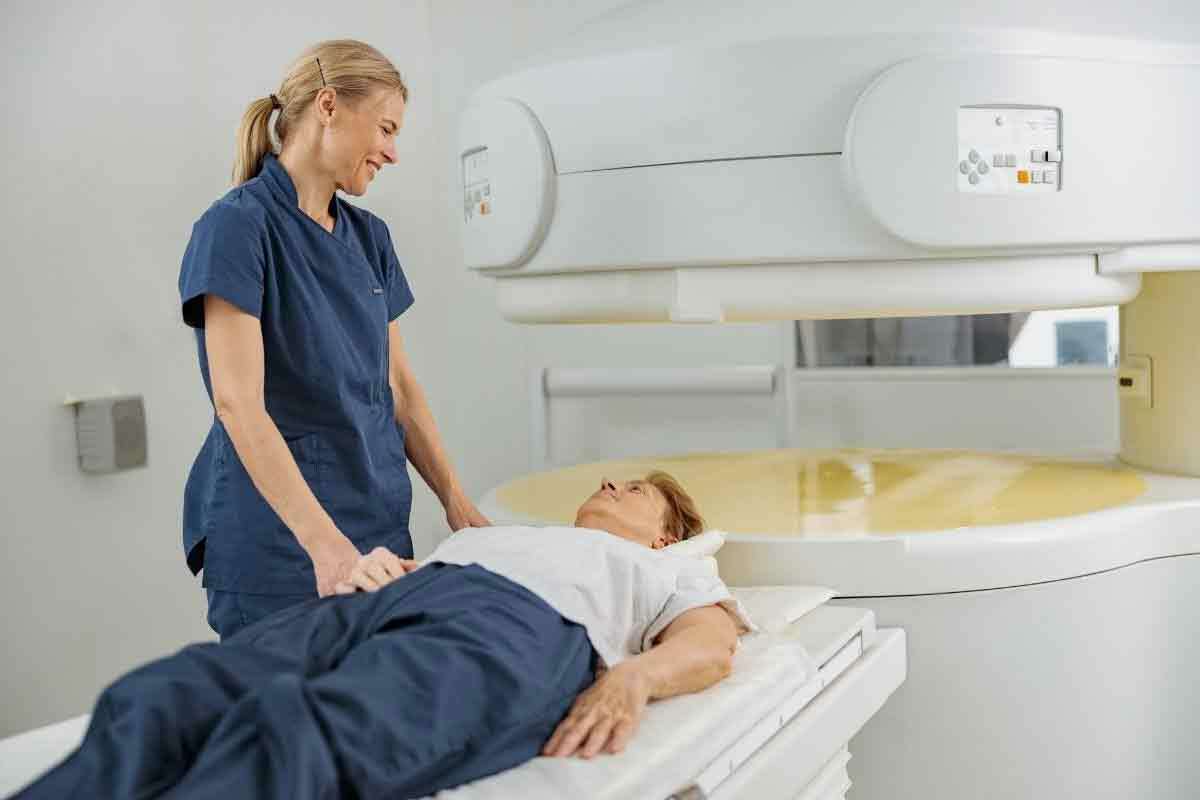Last Updated on November 27, 2025 by Bilal Hasdemir

At Liv Hospital, we know how vital effective cancer treatment is. Chemo IV infusion is a key way to give strong medicines straight into a patient’s blood. This method helps the drugs spread fast and reach the right amount, which is key in fighting cancer.
Missy Lewis, who battled breast cancer, shows how important cancer infusion therapy is. By using IV infusion for chemotherapy, we can hit cancer cells hard. This helps patients get the best results in their fight against cancer.
Key Takeaways
- Chemo IV infusion delivers powerful medications directly into the bloodstream.
- This method allows for rapid distribution and precise dosing of cancer treatments.
- Cancer infusion therapy is a vital part of complete cancer care.
- Liv Hospital is dedicated to top-notch cancer treatment.
- Intravenous chemotherapy is a major part of our cancer infusion center.
Understanding Chemo IV Infusion: The Basics
Intravenous chemotherapy, or Chemo IV infusion, is a common way to treat cancer. It sends cancer drugs straight into the veins. This method helps the drugs reach and kill cancer cells all over the body.
Definition and Purpose of Intravenous Chemotherapy
Intravenous chemotherapy gives cancer drugs directly into a vein. It’s done through a drip or pump over a set time. This method aims to make chemotherapy more effective while reducing harm to healthy cells.
By giving drugs directly into the blood, we can get them to the tumor site more effectively. This makes the treatment work better.
IV infusion for chemotherapy also lets doctors change treatment plans as needed. They can adjust drug amounts and types based on how the patient responds and the cancer type.
Why Chemotherapy Is Administered Intravenously
Chemotherapy is often given intravenously because it has many benefits. It helps the drug spread quickly throughout the body. This is key for reaching cancer cells that have spread.
IV delivery also lets doctors control the drug amount and how fast it’s given. This helps reduce side effects and increase the treatment’s benefits.
Some chemotherapy drugs don’t work well when taken by mouth. This is because they don’t absorb well or get broken down too much in the liver. Giving them intravenously avoids these problems, making sure they stay active in the body.
Key Components of the Infusion Process
The Chemo IV infusion process includes several important parts:
- IV Access Devices: These include peripheral cannulas, central venous catheters, PICC lines, and implanted ports. Each is chosen based on the treatment’s length and type.
- Chemotherapy Drugs: The drugs used depend on the cancer type, stage, and the patient’s health.
- Infusion Pumps: These devices control how fast and how much drug is given. They ensure the drug is given correctly.
- Monitoring and Support: Keeping an eye on the patient during and after infusion is key. It helps manage side effects and keeps the patient safe.
For more information on how many rounds of chemotherapy you might need, check out Liv Hospital’s guide on chemotherapy rounds.
The Science Behind Chemo IV Infusion
Understanding Chemo IV infusion is key to seeing its role in fighting cancer. It’s a method where chemotherapy drugs are given straight into the blood. This helps fight cancer cells all over the body.
How Chemotherapy Drugs Target Cancer Cells
Chemotherapy drugs in IV infusion target fast-growing cells, like cancer cells. These drugs stop cancer cells from growing and spreading. They are made to work best on cancer cells, helping to treat cancer all over the body.
“Chemotherapy is a critical component of cancer treatment, providing a systemic approach,” say top oncologists. IV chemo therapy for cancer gets drugs directly to tumors and other affected areas. This makes it a key treatment option.
Benefits of Direct Bloodstream Delivery
IV infusion of chemotherapy drugs has many benefits. It allows for fast delivery of drugs to the right places. This ensures the drugs work best where they’re needed most. It also helps treat cancers in different parts of the body.
This method also reduces side effects by targeting drugs less to non-cancerous tissues. But, it’s important to weigh the benefits against the risks and side effects. Treatment plans should be tailored to each patient’s needs and how they react.
Pharmacokinetics and Drug Distribution
The way chemotherapy drugs work in the body is vital for their success. Things like how fast they’re given, how they spread, and how long they last affect their effectiveness. Knowing these details helps doctors fine-tune treatment plans, including how often to give chemotherapy.
Adjusting the infusion rate and dosage helps doctors get the most out of the drugs. This approach is a big part of modern cancer care. It shows how far technology and treatment strategies have come.
Types of IV Access Devices for Chemotherapy
IV access devices are key in chemotherapy, with different types for various treatment lengths. They are used in trained centers for chemo infusion. This ensures safe and effective treatment.
Peripheral Cannulas for Short-Term Treatment
Peripheral cannulas are used for short chemotherapy treatments. They are placed in the arm or hand. They are easy to put in and take out, making them great for short treatments.
Central Venous Catheters for Extended Therapy
Central venous catheters, or central lines, are for longer chemotherapy treatments. They go into a large vein in the neck or chest. They allow for ongoing or frequent chemo without needing to stick needles in veins often.
PICC Lines (Peripherally Inserted Central Catheters)
PICC lines are central venous catheters inserted through the arm. They reach a larger vein near the heart. They are perfect for long-term IV chemo or other treatments, reducing vein irritation.
Implanted Ports for Long-Term Treatment Plans
Implanted ports are small reservoirs under the skin, usually in the chest. They are connected to a vein. They are great for long-term chemo, being discreet and easy to care for.
Each IV access device has its benefits. The choice depends on the patient’s treatment plan, how long they’ll need it, and what they prefer. At our place, we help patients pick the best device for their chemo. This ensures their treatment is safe and works well.
The Chemo IV Infusion Process Step by Step
The chemo IV infusion process is detailed and needs careful steps. It’s tailored to each person based on their cancer type and stage. It also considers the patient’s specific needs.
Pre-Infusion Preparation and Assessment
Before starting the infusion, patients get a detailed check-up. This ensures they’re ready for the treatment. It includes looking at their medical history and any past reactions to chemotherapy.
Key steps in pre-infusion preparation include:
- Reviewing lab results to check blood counts and organ function.
- Looking at the patient’s health and any side effects from past treatments.
- Talking about any worries or questions the patient has.
- Getting the IV access ready, like a cannula or port.
Supporting patients emotionally is key, research shows. Our team offers caring support and answers any fears about the infusion.
During the Infusion: What Patients Experience
During the infusion, patients are watched for any bad reactions. The infusion happens in a comfortable place, like a chemotherapy center. This lets patients relax during treatment.
The infusion experience can vary. Some patients might feel mild side effects, while others might not notice anything.
“The care and compassion shown by the nursing staff during my chemotherapy infusions made a significant difference in my treatment experience. Their expertise and support helped me feel more at ease throughout the process.”
Post-Infusion Monitoring and Care
After the infusion, patients are watched for a while to check for any bad reactions. This is also a time for patients to ask questions and learn about managing side effects at home.
| Post-Infusion Care Aspect | Description |
|---|---|
| Monitoring for Side Effects | Patients are watched for any immediate reactions or side effects, and appropriate interventions are implemented if necessary. |
| Patient Education | Patients receive information on managing side effects, follow-up care instructions, and contact details for support. |
| Follow-Up Appointments | Scheduling of follow-up appointments to assess the patient’s response to treatment and adjust the care plan as needed. |
Treatment Cycles and Scheduling Considerations
Chemo IV infusion is given in cycles, with breaks in between. The timing of these cycles depends on the cancer type, the treatment plan, and how the patient responds.
Knowing about the chemo IV infusion process helps patients feel more ready for their treatment. By working with their healthcare team, patients can face their cancer journey with more confidence and support.
Chemotherapy Infusion Centers: What to Expect
Chemotherapy infusion centers are places of hope and healing for many cancer patients. They have the latest technology and are staffed by experts. These centers aim to give patients the best care during infusion therapy.
Facility Setup and Specialized Equipment
Chemotherapy infusion centers have top-notch facilities for comfort and safety. You’ll find:
- Comfortable infusion chairs or beds
- Advanced infusion pumps and monitoring systems
- Private or semi-private treatment areas
The Role of Oncology Nurses and Infusion Specialists
Oncology nurses and infusion specialists are key in chemotherapy. They:
- Administer chemotherapy and watch how patients react
- Teach about treatment and help with side effects
- Give emotional support and answer patient questions
Missy Lewis’s story at CARTI shows how these professionals make a big difference in care.
Patient Amenities and Support Services
Chemotherapy infusion centers offer many comforts to improve the patient experience. You can find:
- Comfortable seating areas for patients and visitors
- Entertainment like TVs, Wi-Fi, and books
- Food and drinks to keep you nourished
Safety Protocols and Emergency Procedures
Safety is a big deal in chemotherapy infusion centers. They follow strict safety rules, including:
| Safety Measure | Description |
|---|---|
| Medication Verification | Double-checking chemotherapy medications before giving them |
| Patient Monitoring | Keeping an eye on vital signs during treatment |
| Emergency Preparedness | Being ready with emergency gear and trained staff |
Knowing what to expect from chemotherapy infusion centers can help patients feel more ready and confident during their cancer treatment.
Comparing IV Chemo Infusion with Other Delivery Methods
It’s important to know the differences between IV chemo infusion and other ways to get treatment. We look at IV chemo infusion, oral chemotherapy, and injections to help patients and doctors make the best choices.
Oral Chemotherapy Options
Oral chemotherapy means taking medicine by mouth. It’s easy and doesn’t need IV access. But, how well it works can depend on how well the body absorbs it and if the patient takes it as directed.
IV chemo infusion puts chemotherapy straight into the blood. This is good for some cancers because it works better. But, oral chemotherapy is chosen for its ease and because it can be taken at home, cutting down on hospital visits.
Subcutaneous or Intramuscular Injections
Subcutaneous or intramuscular injections put chemotherapy into the skin or muscle. These are not as common as IV infusion but are used when needed. They are easier when getting IV access is hard or not needed.
But, how well the body absorbs these injections can change how well the treatment works. IV chemo infusion is better because it gets into the blood right away and works fully.
When Different Administration Routes Are Clinically Preferred
Choosing between IV chemo infusion, oral chemotherapy, and other methods depends on many things. These include the cancer type and stage, the patient’s health, and what the treatment aims to do. Some chemotherapy drugs work better when given through an IV because of how they work in the body.
In the end, the choice is based on what’s best for each patient. Our healthcare team works with patients to find the best way to get treatment. This ensures the treatment is effective, safe, and improves the patient’s quality of life.
Tailoring Cancer Infusion Therapy to Individual Needs
The success of cancer infusion therapy depends on tailoring it to each patient’s needs. This treatment, also known as chemotherapy IV infusion, fights cancer by giving drugs directly into the blood.
Factors Influencing Treatment Protocols
Many factors shape cancer infusion therapy plans. These include the cancer type and stage, the patient’s health, and their medical history. We use these details to create a treatment plan that works best for each patient.
Dosage Calculations and Personalization
Getting the right dosage is key in cancer infusion therapy. We use advanced models to find the best dosage for each patient. This ensures the drug targets cancer cells effectively.
Combination Therapies and Infusion Scheduling
Using multiple drugs together is common in cancer treatment. We plan the timing of these infusions carefully. This helps the drugs work better together and reduces the chance of resistance.
Adjustments Based on Patient Response
We keep a close eye on how patients respond to treatment. If needed, we adjust the dosage, switch drugs, or change how often infusions are given.
| Factor | Consideration | Impact on Treatment |
|---|---|---|
| Type and Stage of Cancer | Aggressiveness and spread | Choice of drug and intensity of treatment |
| Patient’s Overall Health | Presence of comorbidities | Dosage adjustments and supportive care |
| Medical History | Previous treatments and responses | Selection of drugs and avoidance of known allergens or ineffective treatments |
By customizing cancer infusion therapy for each patient, we can greatly improve results. This approach, backed by advanced tech and a deep understanding of cancer, marks a big step forward in cancer care.
Advancements in Chemo IV Infusion Technology
The world of cancer treatment is changing fast with new Chemo IV infusion tech. These updates are making chemotherapy better, safer, and easier for patients.
Smart Pumps and Precision Delivery Systems
Smart pumps and precision systems are big steps forward in Chemo IV infusion. They help give chemotherapy drugs more accurately, cutting down on mistakes and making care safer.
Key features of smart pumps include:
- Advanced software for precise dosage control
- Real-time monitoring and alerts for possible issues
- Integration with electronic health records for easy data management
Targeted Therapies and Immunotherapy Infusions
Targeted therapies and immunotherapy infusions are also big wins. They aim at specific cancer cells or boost the immune system, often with fewer side effects than old chemotherapy.
Examples of targeted therapies include:
- Monoclonal antibodies that target specific cancer cell proteins
- Angiogenesis inhibitors that stop new blood vessels to tumors
- Signal transduction inhibitors that block cancer cell growth signals
Home Infusion Options and Portable Systems
Home infusion options and portable systems have made life better for many cancer patients. They let patients get chemotherapy at home, cutting down on hospital visits and helping them keep up with daily life.
| Feature | Traditional Infusion | Home Infusion |
|---|---|---|
| Location | Hospital or clinic | Patient’s home |
| Flexibility | Limited by appointment times | More flexible scheduling |
| Comfort | Clinical environment | Home environment |
Research Directions and Emerging Protocols
Research is always pushing Chemo IV infusion tech further. New protocols and drug combinations are being tested to better treatment results and patient experiences.
As we keep improving Chemo IV infusion tech, we’re heading towards a future where cancer treatment is more tailored, effective, and accessible. The mix of smart tech, targeted therapies, and home options is changing the game, bringing hope and better lives to cancer patients everywhere.
Conclusion: Navigating Your Chemo IV Infusion Journey
Dealing with cancer treatment can be tough, but knowing about Chemo IV infusion helps a lot. We’ve looked at what Chemo IV infusion is, its benefits, and how it’s given. It’s a key part of treatment for many, delivering chemotherapy directly.
Missy Lewis’s story shows how important good care and support are during treatment. Knowing about Chemo IV infusion helps patients get ready for their treatment. New tech and custom plans are making treatment better and easier.
When you’re going through Chemo IV infusion, staying informed and working with your healthcare team is key. This way, you get care that fits your needs. We’re here to offer top-notch healthcare and support for international patients, guiding you through your treatment.
FAQ
What is Chemo IV infusion, and how does it work?
Chemo IV infusion puts chemotherapy drugs straight into your vein. This method spreads the drugs quickly and effectively. It targets cancer cells more precisely.
Why is chemotherapy administered intravenously?
Chemotherapy goes into veins because it hits cancer cells hard. It also lets doctors control how much and how fast the drug is given.
What are the benefits of IV Chemo infusion?
IV Chemo infusion spreads drugs fast and lets doctors control the dose. It delivers medication directly to cancer cells. This can make treatment more effective.
What types of IV access devices are used for chemotherapy?
Chemotherapy uses different IV devices like cannulas and catheters. The choice depends on treatment length and patient needs.
How is the Chemo IV infusion process carried out?
The process starts with getting ready for the infusion. Then, the infusion happens, followed by care after. Patients are watched for side effects and treatment adjustments.
What can I expect from a chemotherapy infusion center?
Infusion centers have the right tech and staff. They offer a comfy place for patients. There are also amenities and support to ease the treatment.
How does IV Chemo infusion compare to other delivery methods?
IV Chemo infusion is top for hitting cancer cells hard. It beats oral or injection methods in precision and effectiveness for some cancers.
Is cancer infusion therapy tailored to individual needs?
Yes, it’s very personal. Treatment plans depend on cancer type, health, and how well the patient responds. It’s all about fitting the therapy to each person.
What advancements have been made in Chemo IV infusion technology?
New tech includes smart pumps and targeted therapies. There’s also home infusion options. These aim to make treatment safer and more convenient.
How often is chemotherapy treatment administered?
Treatment frequency varies by cancer type and regimen. It can be weekly or monthly, with breaks to let the body recover.
What are the side effects of IV Chemo infusion?
Side effects include nausea, fatigue, hair loss, and infection risk. The severity depends on the drugs, dosage, and patient factors.








